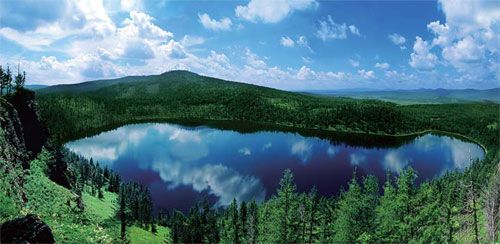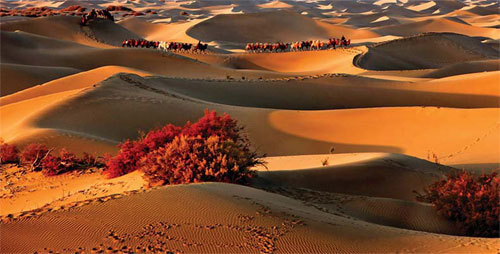Region has much more than grasslands culture for tourists to enjoy
By Zhuan Ti (China Daily)
Updated: 2015-10-26
The Inner Mongolia autonomous region in the north of China is a tourist attraction with a grasslands culture and unique characteristics.
The region has 88 million hectares of grassland, which account for 21.7 percent of the country's total. Nevertheless, there is much more to the region's diverse landscape than grasslands alone. Giant deserts, vast forests and grand ice and snow scenes also give Inner Mongolia incomparable tourism resources.
Aershan, Hinggan League, by the Greater Hinggan Mountains in the northeast of Inner Mongolia is such a resort, offering abundant experiences. It is among the cities with the highest latitude in China, and shares more than 90 kilometers of national boundary with Mongolia. There is also a crucial frontier port in Aershan that connects with Mongolia.
One of the country's biggest volcano clusters in the area makes the city a hub for the finest springs in Asia. Some rivers remain unfrozen during winter, which is a natural miracle for a place whose annual average temperature is below 0 C.
Aershan National Forest Park, which spreads over 103,149 hectares, was established in 2000 and about 80 percent of its area is covered in forests. It is also home to 522 species of plants and 90 kinds of wild animals. About 70 natural springs are scattered through the park, a scale that is rare in China. Tourists are also able to find vestiges of volcanic explosions from more than 1.6 million years ago.
The region's infrastructure is also being improved to embrace more visitors from around the world. Since July, Aershan airport has resumed with newly opened direct flights to some key domestic destinations, including Beijing, Hangzhou and Hohhot. The launch of international flights to Ulan Bator, Mongolia, connects the small port to the world and are expected to help turn it into a world-renowned tourism destination.
According to statistics from the Aershan tourism bureau, about 2.13 million visitors came to the city from January to September, an increase of 21.8 percent from the same period in 2014. Its tourism income within the nine months was 286 million yuan ($45 million), increasing 22 percent.
Inner Mongolia, China's only area that borders both Russia and Mongolia, has rich tourism resources. The region is launching cross-border tourism projects, including sightseeing railway services from Erenhot to Mongolia, and from Manzhouli to the Russian Far East, said Wei Guonan, head of the autonomous region's tourism bureau.
zhuanti@chinadaily.com.cn
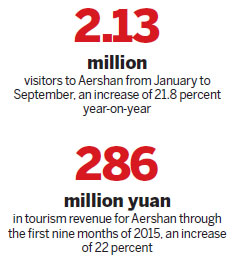
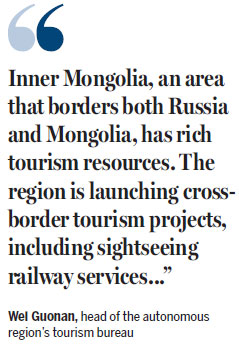
|
Aershan National Forest Park, to the south of the Greater Hinggan Mountains, is a place of natural beauty. provided to China Daily |
|
A camel caravan treks through the Badain Jaran Desert in Arxan in North China's Inner Mongolia autonomous region. The Badain Jaran Desert, the second-largest desert in China, has an area of 47,000 square kilometers and is sparsely populated. Hasbagena / for China Daily |
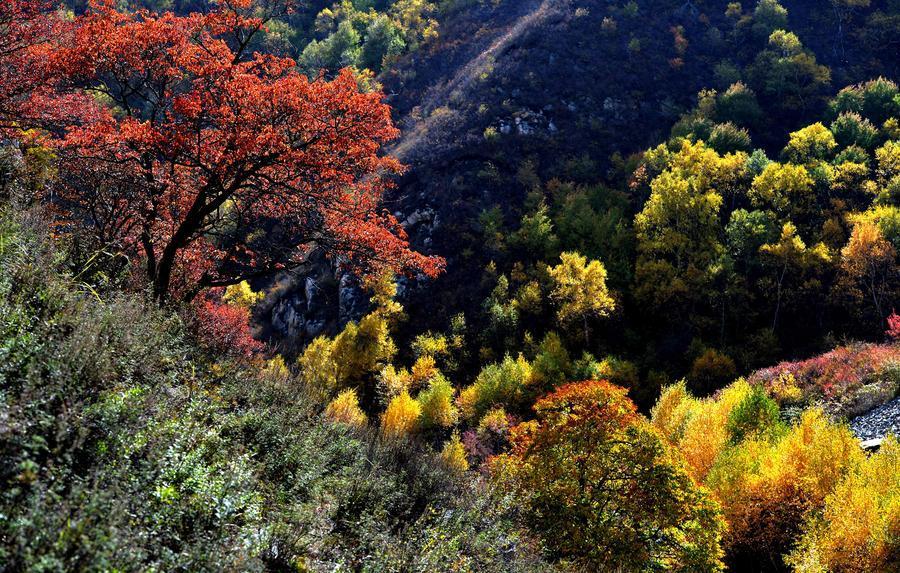
Autumn scene in Daqingshan Nature Reserve
This nature reserve is located in the middle part of the Yinshan mountain range. It’s the biggest nature reserve in Inner Mongolia,covering 400,000 hectares of land. It also serves as the richest area of biodiversity in the mountain.

